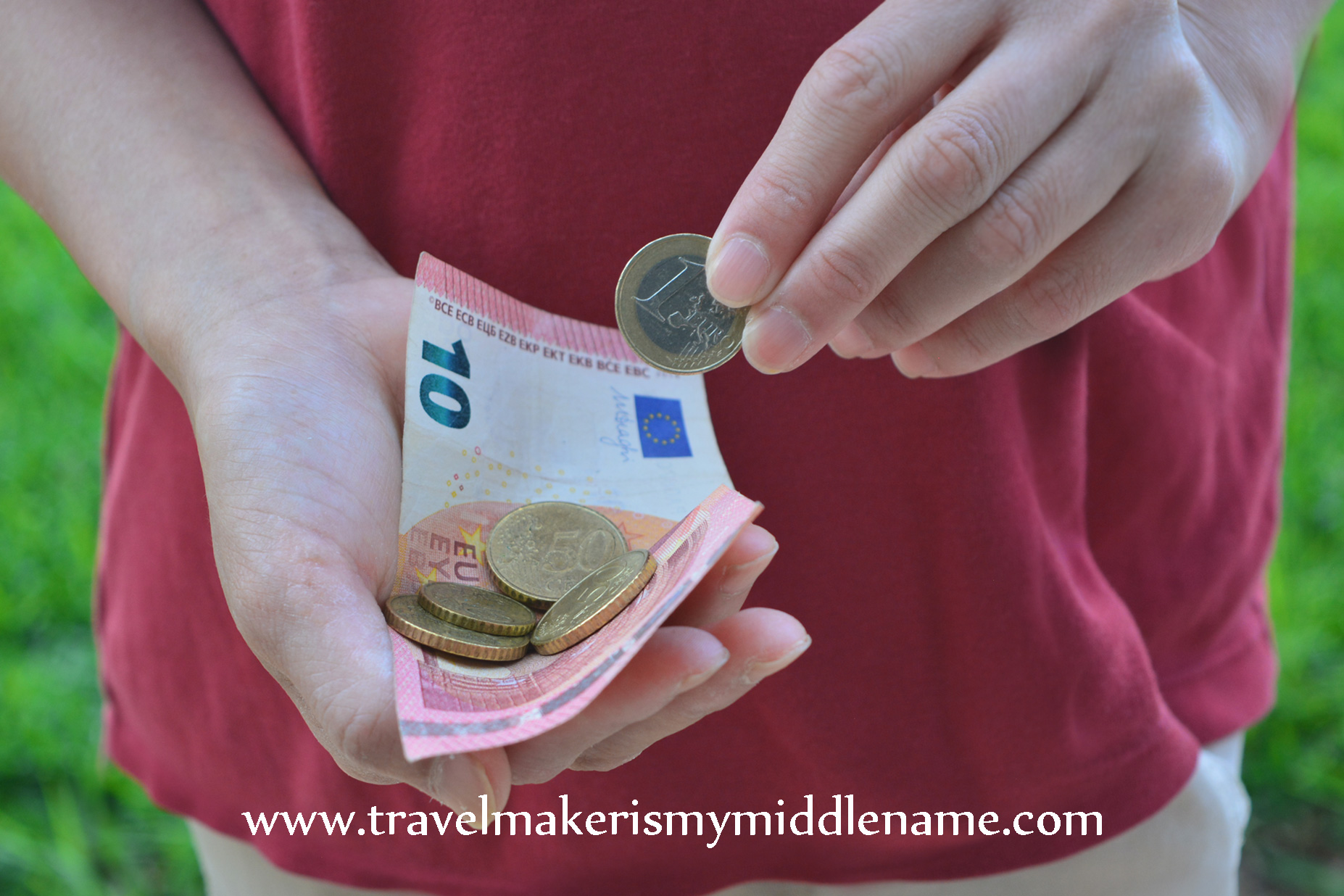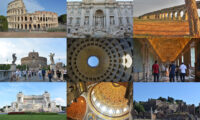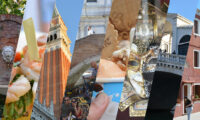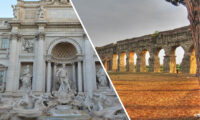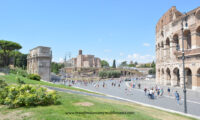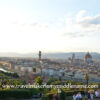Last Updated on: 15th April 2024, 01:29 am
Rome has a reputation for being an expensive city for tourists. I disagree, and I have the facts to prove it: it is no more expensive than other comparable typical tourist destinations in western Europe, such as Paris and Salzburg. By “comparable”, I mean that it also has many tourist attractions and is not specifically made significantly more expensive due to its geographical location, which is the case for places in northern Europe such as Iceland.
This article covers how you can see Rome on a small budget and reveals the true costs of things in Rome, so you will see that is actually not an incredibly expensive destination at all. If you are a backpacker or otherwise on a very small budget, this article will tell you how you can see all the main sights and get the essence of Rome for a very low or even free cost.
The major costs of any trip are transport, accommodation, attraction entry tickets, and food and drink. In Rome, all major attractions close to affordable and easy public transport access and transport passes, there are free drinking water fountains throughout the city, and food is slightly cheaper compared to other parts of Italy due to a formal ban on cover charges (Italian: coperto).
This article is written based on personal experience so you know it is reliable, however situations, prices and opening times change, so make sure you check the official sites provided before you go. Personal preferences for food, attractions and accommodation vary, and Rome has a vast number of attractions, both large and small, so this article is not intended to be an exhaustive rule-book, but rather a guide to help you enjoy Rome on the lowest budget possible based on what most people would enjoy.
Contents:
– How to get to and from Rome city and the airport
– Rome public transport passes
– Travelling with small children
List of free days for paid attractions
List of free attractions that are actually worth your time
Saving on transport

A single, one way trip adult ticket on public transport (bus and metro) in Paris (France) starts at 2,15 euro (€) if bought beforehand, 2,50€ if bought onboard the bus. In Salzburg (Austria) it starts at 2,30€, and in Hamburg (Germany) it is 3,80€. Whereas in Rome, a single, one way trip adult ticket is only 1,50€. How’s that for evidence?
Public transport costs in Rome:
A ticket for a single trip on the metro or bus or tram costs 1,50€ and lasts 100 minutes with vehicle/line changes. On the metro, a single trip is defined as this: Exiting though the turnstiles once to change between metro lines A to B and B1, counts as the end of a single trip. Exiting through the turnstiles is permitted for changing from line A to C.
If you intend on using public transport more than 4 times and want to stay more than one day, there are several types of unlimited travel passes you should consider, below.
The passes allow you to have unlimited rides on public transport in the territory of Rome during the valid time period, and are valid on:
• buses, including bus lines 520 and 720 connecting Rome to Ciampino Airport (Rome’s second international airport, but not the Leonardo Express train between Roma Termini/ (Rome Central Station) and Leonardo da Vinci Fiumicino Airport (Rome international Airport))
• trams
• trolleybuses
• metro lines
• Regional trains: Roma to Lido, Termini to Centocelle and Roma to Viterbo and 2nd class rides on Trenitalia trains
Travelling with small children?
On the Rome metro/bus/tram system: Children under 10 years travel for free with a paying adult!
On Trenitalia trains: on national trains, children under (not including) 4 years of age is free when not occupying a seat. Children who occupy a seat, or are 4-14 inclusive, get a 50% discount. For regional trains, children under (not including) 4 years of age is free when not occupying a seat, children 4-11 (not including 11 years) receive a 50% discount and children above 12 years pay full price.
How to get to and from the airport and city in Rome
There is a special airport line between Roma Termini (Rome Central Station) and Rome international airport (Fiumicino Airport) called the Leonardo Express. This is a direct, non-stop trip that takes 32 minutes. A single trip on the Leonardo Express on Trenitalia trains between Rome central station and Rome International Airport costs 14€. Alternatively, for 8€, you can take a Regional train that takes around an hour plus or minus 10 minutes with one change. The Leonardo Express comes once every half hour with the regional trains coming in between.
Good to know:
Unlike some cities around the world, Rome International Airport doesn’t have a separate airport access fee so you can accurately budget the price of transport ahead of time.
Transport passes in Rome
Official site:
https://www.atac.roma.it/en/tickets-and-passes
The transport passes in Rome that are available are:
24 hour ticket – 7€
48 hour ticket – 12.50€
72 hour ticket – 18€
The time period starts from the time you first validate the ticket. Validation is basically the first time you tap it at a card reader/first time you use it. This means you can buy it ahead of time and use it later.
The passes are NOT valid for Trenitalia non-stop direct trains between Roma Termini (Rome Central station) and Leonardo da Vinci Fiumicino Airport (Rome International Airport).
Paper tickets can be bought at ticket vending machines near/outside or in train stations, Atac ticket offices, authorised shops eg tobacco shops (Italian: tabaccheria or simply tabacchi) or newsagency kiosks, or you can get an electronic ticket on a smartphone with the TicketAppy app but if your phone runs out of batteries or you forgot or lost it and are checked, you can get a fine.
Saving on Attractions
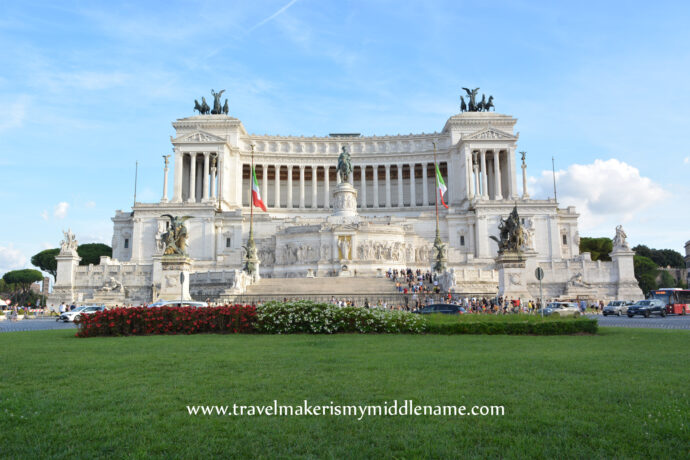
Rome’s metro system is very efficient and fast, and there are many buses and all of Rome’s major attractions are located near public transport access so with a pass, it is really a hop on hop off thing and there is no need to buy expensive Hop on Hop off tourist bus tickets, unless that is the experience you want.
Many attractions offer some form of discount for eligible patrons and have free entry days. Check the attraction of your interest to see if they offer this before you go. Here are some of the discounts to take note of.
Discounts
Many attractions offer students or patrons under 18 discounts or free entry and heavily discounted entry tickets, usually around just 2€, for patrons 18 to 25 (some may be restricted to local or European residents/students only). Museums, including the Colosseum and Vatican City museums, give free entry to disabled patrons and their companions. St Peter’s Basilica is free to enter, but there are very long queues (in the order of hours, but also allows priority entry for disabled patrons.
Free entry by law
Italian law stipulates free entry to museums and attractions of historical and cultural significance to certain patrons in certain conditions. The ones that can concern a foreigner tourst are:
• All visitors under 18 (visitors under 12 must be accompanied by an adult)
• Disabled people and their family member or other companion who demonstrates their belonging to social and health care services. This means you should be able to prove you belong to some sort of social/health care service with, for example, a card.
You should also check to see if there are discounts for students (bring your ID).
Free entry days
Many museums and attractions offer free entry on certain days for all patrons. Naturally, queues will be long so plan ahead accordingly. Check to see if your target attraction offers this kind of deal.
Note: Despite there being set free entry days, not all applicable days are open days, ie the museum may be closed or have shorter hours on a day that is usually a free entry day. Check their website before you go.
Here is a list of places and their free entry days:
First Sunday of every month:
• The Pantheon
• The Colosseum and the Roman Forum
• A collection of museums called VIVE (see their website here)
• Castel Sant’Angelo
Last Sunday of every month:
• The Vatican City museum.
TIP: If you visit Rome for a full week at the end of one month, you can take advantage of the last Sunday and first Sunday of the month rule!
At other times: If you really do not want to pay, here are free ways to enjoy paid-entry places:
The Colosseum and the Roman Forum
The Colosseum and the Roman Forum can be experienced from the outside for free without a ticket, simply walking by around it. The Colosseum is surrounded by a metal fence to guide queues, but other than that, the view is completely unhindered and can be seen from anywhere outside it in a 360° space. The area right next to the Colosseum is even elevated for unobstructed views. The Arch of Constantine is located right in the Colosseum square (Piazza Colosseo) for up free and close viewing too (with a protective fence). You can also walk around the outside of the perimeter of the Roman Forum. The Roman Forum is in a sunken area, so the paths surrounding it are elevated, allowing you to look inside, albeit a bit far.
TIP: Bring binoculars to get a good look inside the Roman Forum if you intend on only walking outside it!
Castel Sant’Angelo
Walk around the outside and up to the castle from the road across the bridge over the Tiber River and to the edge of the Vatican City (and view it from afar) to view all 3 in one leisurely. Easily doable even for a person like me who has low walking tolerance.
Vatican City
Walk around the square inside the Vatican City which is really just a complex of buildings and open spaces surrounded by a “border” (columns, roads, buildings) and admire the atmosphere and architecture without paying to go inside the museum. See also “Basilica Papale di Santa Maria Maggiore” below.
100% Free attractions (that are actually worth your time)
• St Peter’s Basilica
– A very large church in the Vatican City dedicated to Peter, one of the twelve apostles in Christian history.
• Trevi Fountain
– A large 18th century water fountain designed as a facade fixed onto the Palazzo Poli.
• Vittoriano/Monumenta a Vittorio Emanuele II, aka Altare della Patria or “Wedding Cake”
– A white building dedicated to the first king of Italy. When viewed from the front, the building is has two tiers, the top one offset from the sides of the lower one, making it resemble a wedding cake and hence its nickname.
• Vatican City
– An area occupied and ruled by religious bodies, including the pope, that is self proclaimed to be sovereign and separate to the rest of Rome. Without paying, you can see modern European architecture but not much more in just the square.
• Basilica Papale di Santa Maria Maggiore
A small church dedicated to Mary, the mother of Jesus in Christian lore, with interior decorations that are similar to ones at the Vatican City. If you really have no intention of paying nor time/opportunity to enter the Vatican Museums, you can go to this church to have a look inside to get an idea of the decorations inside the Vatican Museums. It may be worth getting a local guide to explain the significance of the church though.
• Any ancient aqueduct
Rome has many ancient aqueducts. The Park of the Aqueducts contains the most in quantity and best preserved ancient aqueducts in one place. You can see them up close, and for free. It is outdoors and a little bit further from the city center but is one of the biggest things that ancient Rome is known for, so worth a visit. Interested in aqueducts? Read more about the aqueducts and the Trevi water fountain here and get a guide on 2 bonus activities!.
What about the Spanish Steps?
Yes… what about them?
You’ll notice that the Spanish Steps is not on this list. That’s because it is widely deemed on many platforms and forums as one of the most overrated tourist attractions in Rome. First of all, they are simply steps. Second, most people who gave it a 5-star rating on Tripadvisor do so because they finally got to visit a film location, or for the views. It is true that you can see high up views of Rome at the top of the Spanish Steps, but this is because the steps were made to bridge the lower and upper part of town so naturally would give you views towards the lower town. However, if it is views you want, you should go to the viewing terrace in the Vittoriano or the Castel Sant’Angelo. Some of the negative reviews of the Spanish Steps talk of how they had only a few hours in Rome and trekked several kilometres by foot to see it over other sites, and as expected, were sorely disappointed.
HOWEVER. The water fountain at the base of the steps, the Barcaccia Fountain, is served by a 2000 year old aqueduct that is still working today. The aqueduct that serves the Barcaccia Fountain is the same one that also serves the Trevi Fountain. If you are interested in visiting the aqueduct, you can learn how to visit it, included in my PDF guide on the two bonus activities at the Trevi Fountain, available for free download in the link above. It even includes a one-page black and white printer friendly version you can print and take with you on your trip to Rome.
Accommodation
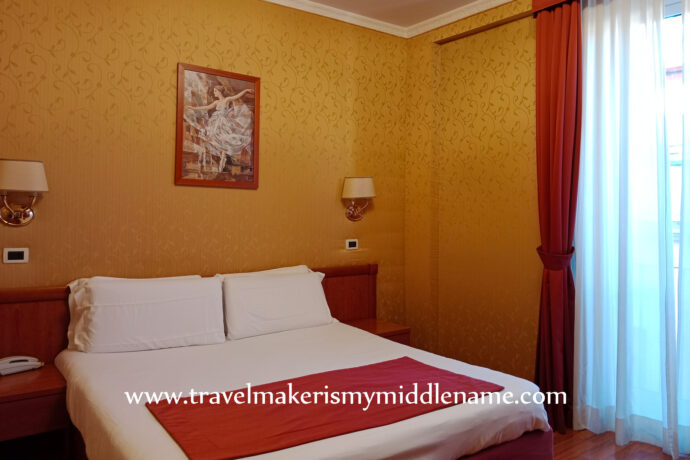
Hotel prices in Rome during a comparable season is no different to other cities. You can check this by looking up hotel prices with similar criteria in different cities, such as inclusion of breakfast and located in the city center.
So, instead, you should compare like for like and look for when it is cheaper to stay in Rome, and the type of accommodations in Rome.
There is a vast number of different accommodation types in Rome, from budget backpacker hostels to 5 star hotels. Prices also vary, and can vary wildly even for the same hotel room, between peak and low seasons and weekday and weekend check-ins, so check accordingly. You can obviously save by travelling during an off-peak season. August is a great time to visit Rome because the weather is nice (if not a bit hot for some) and is off-peak season. You can verify this by checking hotel prices for August and September and you’ll notice the prices instantly go up in September.
Free accommodation
You can consider using free couch surfing services like BeWelcome.org and Couchsurfing.com, although in recent years, Couchsurfing has dropped in reputation quality. If you don’t know what it is, couch surfing is when you stay, or “crash on someone’s couch” for free, in a stranger’s home on their couch or spare room for one, or if you are lucky, two nights. The hosts are kind people who enjoy meeting people from all over the world so have agreed to help out those who may be in need of a place to stay and posts their availability on the websites listed above. Thus you should obviously return the kindness by be a good house guest. Typically, guests bring something from their home country, even something small, for the hosts as a thank you. Hosts are ordinary people so most live in suburban neighbourhoods, you may have to spend a little longer on travel time to get to sight seeing destinations.
How to make your accommodation money stretch further:
In Italy, as in the rest of Europe, a tax, called a city tax, is charged on every tourist per night they stay. The amount varies, between 1-4€, possibly more. But, places that offer dining facilities/services, even small ones (such as a few small tables and a coffee bar), will have to charge more than an otherwise comparable place with similar rooms and facilities that only lacks a dining area. So, you can stay at a place that doesn’t have these facilities, if each euro matters a lot.
Another method is to choose a place that has a buffet breakfast included in the room price. Make the most of the buffet breakfast, fill up a water bottle, and you might even be allowed to take a fruit or a pastry with you so you don’t need to stop elsewhere for lunch. Some easy to pack things are a small sandwich (bread rolls + ham, cheese, cherry tomatoes, cucumber etc), fruit, and pastries.
Food and Drink

Coperto
Coperto, or cover charge, is a set fee charged to patrons per person in Italy charged in restaurants in Italy for dine-in meals that supposedly covers basic maintenance cost like linen, cutlery, and bread and condiments given to you at the start of a meal, usually between 1-2€ per person. As silly as it sounds, (any rational person would expect the cutlery used for eating the food you ordered to be included in the cost) unfortunately, in most of Italy, it is not optional. But in Rome and the rest of the Lazio region, it is actually illegal. However, although coperto charges are technically illegal in Rome, this does not stop many restaurants in Rome from charging it to tourists who don’t know otherwise, understandably leading some people to see it as a scam.
But there is a caveat. Since coperto usually covers bread, restaurants in Rome can still charge “coperto” or “pane”, as long as it is specifically and separately listed on the menu (ie, if the amount they ask you for isn’t found on the menu, it is illegal). If it is not listed on the menu and they charge you for it afterwards, you can definitely dispute it. If it IS listed on the menu and they bring you unwanted bread at the start of your meal and you did not decline it, you will most likely have to pay. Otherwise, you can decline it and it should be removed from your receipt. I personally feel that an “opt out” charge is a scam, even if it is listed on the menu, since people always sit down first and then get the chance to read the menu, meanwhile the bread is already brought over. This is also unlike the EU since they are very strict about data collection on websites, that is, it must be opt-in rather than opt-out.
So, to avoid it, make sure you look for signs in the window or menus that are displayed outside the restaurant that say “No Coperto/No Cover charge” and reject the bread that comes to your table when they bring it. Elsewhere in Italy, you could choose to have it takeaway if you have another place to eat.
If you must dine at a restaurant in Rome/the Lazio region that does not specifically say they don’t charge coperto, check the menu before you sit down, and save yourself the hassle of disputing it afterwards by asking before you agree to dine there, whether they charge it. Also, for non-Italian cuisine restaurants (say you dine at a Chinese or Thai restaurant instead, but in Italy) where they don’t serve bread before the meal, they can claim anything else is the “coperto” item after you finish your meal (that sauce on the side? The tablecloth? The napkin you used?).
Bring a bottle to get free water from water fountains
Tap water in Rome is drinkable and Rome (and indeed, throughout Italy) has many free public drinking water fountains, so you should bring your own water bottle to fill up rather than buying. The water comes from underground aqueducts so is cold even in summer. Note: these are distinguished from decorative fountains like the Trevi Fountain, you should not drink from decorative fountains as the water may be recycled and contaminated by coins tossed in.
Drinking water when dining in
If you dine in at a restaurant and want water, in most places, you are expected to pay for bottled water, which again, is quite a good way to deter customers, considering the ancient Romans built the entire aqueduct and water fountain system to deliver free drinking water to its citizens and visitors, and tap water in Rome is drinkable.
Some places will bring you tap water for free in a jug or bottle at the start of a meal or even just have it ready for self serve, while other places will bring it to you if you ask, but not all places do. Most places will refuse to serve tap water. But if you want to ask for it, ask for “acqua del rubinetto” or “acqua naturale” (still water) in Italian (not a lot speak English, even in Rome).
One Chinese restaurant I went to in Rome refused to serve free tap water, so I drank water I brought myself (filled for free from drinking water fountains) and was not told off by staff – make of that what you will.
Another Chinese restaurant charged just 2€ for a very small pot of tea (but sufficient for 2 people) with free refills, which is very reasonable. Still other places will even bring you a jug of tap water for free without you asking. It depends on the place.
Pack your own food or takeaway
A nice and cheaper way to eat would be to buy food from a grocery store and pack a picnic or even a sandwich in your backpack, or if you really want something with more bite and hearty, just eat at a fast food place and get a burger.
Share the food
If you don’t eat a lot you can share a dish with a travel buddy. Note that in some places, the restaurant requires each diner to order a dish, or if they wish to share a dish, they have to each buy an alcoholic drink. If in doubt, make sure you ask before you dine in touristy places.
Do you have any tips for travelling on a low budget in Rome? Leave a comment below.
Now read about the 4 things you should budget for when travelling in Italy and why you should travel with spare change.
Related Posts
-
Rome Attractions: The top 9 attractions in Rome, Italy 2024
Find out what the top 9 attractions for Rome in 2024 are, and which one…
-
4 costs to expect and budget for when travelling in Italy
Read about the four costs you need to budget for each traveller when travelling in…
-
Rome Attractions: The top 9 attractions in Rome, Italy 2024
Find out what the top 9 attractions for Rome in 2024 are, and which one…
-
13 Free and paid things to do in Venice, Italy
A non-exhaustive list of 13 free and paid things to do in Venice, Italy (plus…
-
The Roman Aqueducts and the Trevi Fountain: What they are and how to get there + 2 Bonus activities for tourists
Information about the Roman aqueducts and Trevi Fountain in Rome, Italy, for tourists and how…
-
4 costs to expect and budget for when travelling in Italy
Read about the four costs you need to budget for each traveller when travelling in…
-
4 costs to expect and budget for when travelling in Italy
Read about the four costs you need to budget for each traveller when travelling in…
-
4 costs to expect and budget for when travelling in Italy
Read about the four costs you need to budget for each traveller when travelling in…
-
Rome Attractions: The top 9 attractions in Rome, Italy 2024
Find out what the top 9 attractions for Rome in 2024 are, and which one…
-
The Roman Aqueducts and the Trevi Fountain: What they are and how to get there + 2 Bonus activities for tourists
Information about the Roman aqueducts and Trevi Fountain in Rome, Italy, for tourists and how…
-
How to visit the Colosseum and Roman Forum
How to get to the Colosseum and Roman Forum and the different ticket types The…
-
Rome Attractions: The top 9 attractions in Rome, Italy 2024
Find out what the top 9 attractions for Rome in 2024 are, and which one…
-
The Roman Aqueducts and the Trevi Fountain: What they are and how to get there + 2 Bonus activities for tourists
Information about the Roman aqueducts and Trevi Fountain in Rome, Italy, for tourists and how…
-
How to visit the Colosseum and Roman Forum
How to get to the Colosseum and Roman Forum and the different ticket types The…

